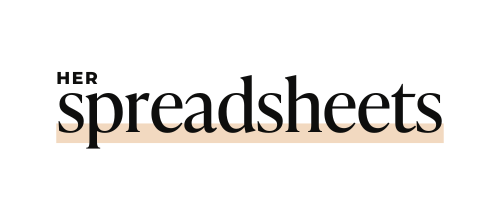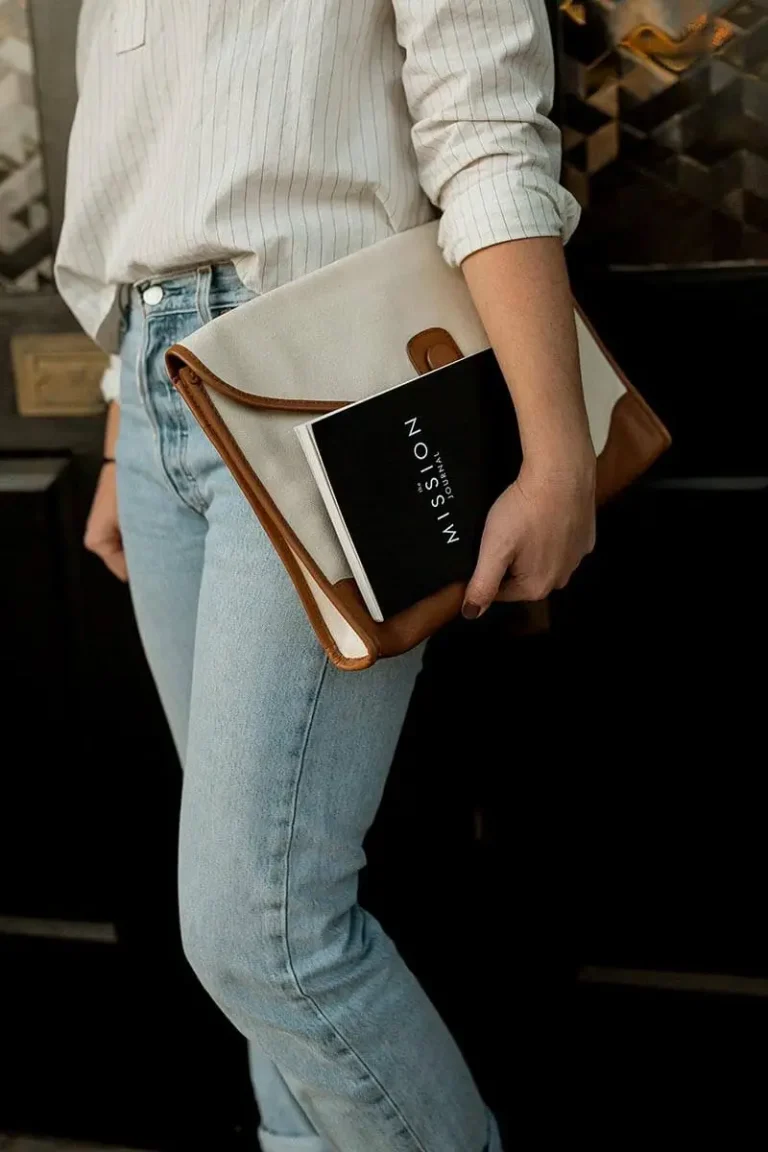So there I was, staring at my bank account on my 42nd birthday, wondering how the actual hell I’d gotten here. Six-figure salary, cute house in a decent suburb, job I didn’t totally hate most days… and somehow still living paycheck to paycheck with a superannuation balance that made me want to crawl under my doona and never come out.
Sound familiar? If you’re nodding along, pour yourself something strong (or herbal, no judgment) and settle in. Because I’m about to drop some truth bombs about money after 40 that nobody else seems willing to say out loud.
First things first: you are not too late.
I repeat: YOU 👏 ARE 👏 NOT 👏 TOO 👏 LATE.
That voice in your head saying you’ve missed the boat? It’s a liar. The financial industry loves making us feel like if we haven’t sorted our money by 30, we might as well give up. What a load of crap.
I’m going to walk you through exactly what I did (and what I wish I’d done sooner) to turn my financial situation around after 40. No perfection required. No spreadsheet obsession necessary. Just practical steps that actually work when you’ve got a busy life and approximately zero desire to become a finance bro.
Let’s talk about where your money’s actually going
Before we dive into planning for the future, we need to get real about the present. And I mean REAL real.
When I finally sat down and looked at where my money was going each month, I nearly choked on my cappuccino. Not because I was spending on anything particularly outrageous, but because I had absolutely no clue where thousands of dollars were disappearing to each month.
The lifestyle creep trap (aka “how the hell am I spending this much?”)
Here’s what happens to most of us. Our income gradually increases over our 30s and early 40s, but instead of saving that extra money, our expenses mysteriously expand to match it. That’s lifestyle creep, and it’s a sneaky little bastard.
For me, it looked like
- Upgrading to a bigger house (with a $1,400 a week rent)
- Getting used to UberEats three times a week because “I deserve it” after tough days
- Saying yes to every school fundraiser, colleague birthday gift, and charity request
- Subscribing to approximately 17 streaming services I barely used
None of these things were capital-B Bad. But together? They were silently destroying my ability to build wealth.
Quick mini-audit to spot money leaks
You don’t need fancy apps or spreadsheets for this (though they can help). Just grab your last two months of bank and credit card statements and highlight anything that makes you go “huh?” or “yikes!”
When I did this, I discovered I was spending:
- $187 on subscriptions I’d forgotten about
- Over $400 a month on random Amazon purchases I couldn’t even remember
- $290 on work lunches that were mediocre at best
Look for patterns, not perfection. The goal isn’t to shame yourself, it’s to find money that can work harder for your future self.
Here’s a super simple trick I use with clients. The “Wait 48” rule. When you want to buy something non-essential, put it on a list and wait 48 hours. If you still want it after two days, go for it! About 70% of the time, the urge passes. This one habit alone saved me over $3,000 in my first year using it.
The difference between being busy vs. being intentional with money
Here’s the truth bomb that changed everything for me. Being “busy” with money (paying bills, dealing with daily expenses, worrying about it) is not the same as being intentional with it.
I used to pride myself on always paying bills on time and having a rough budget. But I wasn’t actually making decisions about my money. I was just reacting to whatever financial fires popped up each month.
Being intentional means knowing your priorities and making sure your money flows there FIRST, not just dealing with whatever’s left after life happens.
Try this mindset shift that worked wonders for me and my clients. Instead of asking “How can I save more?” ask “What am I saving FOR?” Having concrete goals like “I’m putting aside $250 a month toward a three-week trip to Italy for my 50th birthday” feels way more motivating than generic “saving for retirement.”
Your future self called, she wants a retirement plan
I’m going to be brutally honest here. When I turned 40, my super balance was embarrassingly low. Between taking time off when my kids were little, working part-time for years, and just not paying attention, I had about a third of what the “experts” said I should have by my age.
Cue panic, shame spiral, and an entire block of chocolate demolished in one sitting.
But after the chocolate hangover faded, I got to work. And you know what? It wasn’t as impossible as I thought.
The biggest mistake I see women making is putting retirement planning in the “too scary, will deal with later” basket. But here’s the thing, even small actions now can dramatically change your future options.
Superannuation 101: What most women don’t realise
Did you know the average Australian woman retires with about 40% less super than men? It’s not just because of the gender pay gap (though that’s part of it). It’s also because we’re more likely to take career breaks, work part-time, and, let’s be real, pay less attention to our super.
Here’s what I wish someone had told me years ago.
- You can make extra contributions to your super directly from your pre-tax income (called salary sacrifice), and it might actually lower your tax bill
- Most super funds have insurance built in that you’re paying for (and might not need)
- You can consolidate multiple super accounts to stop paying multiple sets of fees
When I finally sorted mine out, I found over $22,000 in a super account I’d forgotten about from a job I had in my 20s. Not even joking.
How much do you actually need?
Those online retirement calculators that tell you you need $2 million to retire comfortably? Take them with a massive grain of salt.
The truth is, how much you need depends entirely on
- What kind of lifestyle you want in retirement
- Whether you’ll own your home outright
- Where you plan to live
- Your health and family situation
For me, I worked backwards. I figured out how much I spend now, subtracted costs that would disappear in retirement (kids’ expenses, work-related costs), and added potential new costs (more travel, healthcare). This gave me a much more realistic target than some random online calculator.
According to ASFA’s Retirement Standard, a comfortable retirement for a single person costs about $49,000 a year. But that’s just an average, YOUR number might be higher or lower. One client of mine realised she only needed about $38,000 annually because she planned to live in a lower-cost regional area and had simple tastes. That discovery instantly made her retirement goals feel achievable!
If you’re behind, here’s how to catch up without panic
If your super balance makes you want to hyperventilate, take a deep breath. You have options
- Increase your super contributions by 1-2% of your income (you probably won’t even notice it missing from your pay)
- Consider working a few years longer than you originally planned (even 2-3 extra years can make a massive difference)
- Look into government co-contribution programs if you’re eligible
- Review your super’s investment options (many women are too conservative with investments)
The key is to start now, not tomorrow. Even small changes have time to compound over the next 15-25 working years.
One practical step that helped me. I set up a “Super Power-Up” where I increased my contributions by 0.5% every six months. It was so gradual I barely felt it, but after three years, I was contributing an extra 3% to my super—a game-changer for my long-term balance.
Small steps that compound like crazy
Here’s a mind-blowing fact. If you can find an extra $100 per week to put into your super from age 40, by retirement at 67 that could add approximately $228,000 to your balance (assuming 7% returns).
Not sure where to find that extra money? That’s why we started with figuring out where your money’s going. Those subscription services and forgotten expenses can fund your future freedom.
Ditch the old-school budget and set up a money system instead
I’ve tried every budgeting method under the sun. Apps, spreadsheets, cash envelopes, you name it. Know what happened every single time? I’d stick with it for about three weeks, then get busy/bored/distracted, and abandon the whole thing.
Sound familiar?
The problem wasn’t me (or you). It’s that traditional budgeting is massively time-consuming and frankly, a bit soul-crushing for most of us.
Studies show that 80% of traditional budgets fail within months. It’s not because we’re lazy or undisciplined. It’s because most budgeting approaches don’t work with how our brains actually function.
The “set and forget” system that saves your sanity
Instead of tracking every dollar, I now use what I call the “pay yourself first and automate the rest” system. Here’s how it works
- Figure out how much you need for necessary expenses (housing, food, transport, utilities)
- Decide how much you want to save/invest each month
- Set up automatic transfers for your savings BEFORE you can spend that money
- Live on what’s left without guilt
The magic of this system is that it prioritises your future while still giving you freedom in the present. No more tracking every coffee or feeling guilty about buying lunch.
I recommend using the 50/30/20 rule as a starting point: 50% for needs, 30% for wants, and 20% for savings and debt repayment. But here’s the key, this isn’t rigid. I do 60/20/20 because I live in Sydney where housing costs are brutal. One of my clients does 40/20/40 because she’s aggressively saving for early retirement. It’s a framework, not a prison sentence.
Automations = freedom
Every successful woman I know uses automation to stay consistent with their money. It’s not lazy. It’s brilliant.
Some automations that changed my financial life
- Automatic super contributions above the minimum
- Scheduled transfers to different savings accounts on payday
- Automatic investing into index funds each payday
- Bills on autopay (with notifications so I can check for errors)
When I set these up, my stress levels dropped dramatically. I no longer lay awake at night wondering if I’d remembered to transfer money to my savings or pay the electricity bill.
Pro tip I learned the hard way. Set up your automatic transfers for 1-2 days AFTER payday, not on payday itself. This gives a buffer in case there are any delays in your salary hitting your account. One client told me this simple timing change eliminated her overdraft fees completely!
Why tracking your net worth is way sexier than tracking every coffee
Instead of obsessing over small daily expenses, I now track one number, my net worth. That’s everything I own (car value, super, investments, savings) minus everything I owe (car repayment, any other debts).
I check this number monthly, not daily or weekly, and it gives me a much better picture of my financial progress than knowing I spent $4.50 on a coffee yesterday.
When I started, my net worth was actually negative. Five years later, it’s solidly positive and growing. That progress feels way better than stressing about whether I’m “allowed” to order takeaway this week.
A quick how-to for net worth tracking that doesn’t suck. Create a simple spreadsheet with two columns, “Assets” and “Liabilities.” List everything you own with approximate values in the first column, everything you owe in the second. Subtract liabilities from assets, that’s your net worth. Update it every months, and watch that number grow. Much more satisfying than agonising over your daily latte habit!
Protect your future: insurance, wills & worst-case planning
Alright, I know this section isn’t exactly fun cocktail party conversation, but it’s crucial. As a 40-something woman, you’ve likely built something worth protecting, whether that’s assets, income, or simply your family’s wellbeing.
I avoided this stuff for YEARS because it felt overwhelming and, let’s be honest, a bit morbid. But after helping many women sort their finances, I can tell you that this is the foundation that lets you sleep soundly at night.
Why your emergency fund isn’t optional anymore
In my 20s, my “emergency fund” was the Bank of Mum (sorry, Mum!). In my 30s, it was my credit card. Neither of these is a great plan.
At 40+, having 3-6 months of essential expenses saved is non-negotiable. Not because I’m a worry-wart, but because
- Job security isn’t what it used to be (as I learned the hard way when my company restructured)
- Health issues become more common (again, learned this one the hard way)
- Family responsibilities often increase (aging parents, anyone?)
Building this fund took me 18 months of consistent deposits, but it’s the best sleep aid I’ve ever invested in.
Research from Financial Counselling Australia shows that 50% of financial crises could be managed with just $3,000 in emergency savings. Start with a goal of $2,000, then work your way up from there. One of my clients stashed her emergency fund in a separate bank entirely so she wouldn’t be tempted to dip into it, genius move that helped her build it faster!
What to review in your insurance & super settings (yep, again)
When was the last time you actually looked at your insurance coverage? If you’re like most women, it’s been… a while.
Take an hour this week to review
- Life insurance (especially if people depend on your income)
- Income protection (seriously underrated and often tax-deductible)
- Health insurance (are you paying for pregnancy coverage you don’t need anymore?)
- TPD insurance (total and permanent disability, often included in super)
I discovered I was drastically underinsured for income protection but paying for pregnancy and fertility treatments on my health insurance at 42. Not exactly optimised!
Quick checklist that’ll take you 15 minutes but could save thousands. Call your super fund and ask about your default insurance. Most Aussies don’t realise they’re paying for insurance through their super, often with coverage that doesn’t match their needs. One client discovered she was paying for THREE different life insurance policies, through two super funds and a separate policy, and was able to consolidate and save over $1,100 a year.
Wills, power of attorney, and the stuff we all avoid
I put this off for YEARS because thinking about my own mortality gave me the ick. But after a friend went through probate hell when her partner died without a will, I finally sorted mine out.
You need
- An up-to-date will
- Power of attorney documents
- Advanced healthcare directive
- Beneficiaries nominated on your super (super doesn’t automatically go to your will!)
It took one afternoon with a lawyer and cost about $900. Considering it protects everything I’ve worked for and everyone I love, that’s a bargain.
Did you know that about 45% of Australians don’t have a valid will? And that your super is NOT automatically covered by your will? You need to complete a binding death benefit nomination with your fund. When I share this in my workshops, at least half the room looks shocked. This five-minute form could save your loved ones months of legal headaches later.
Wealth isn’t just a number
After all the practical stuff, let’s talk about something equally important. How you THINK about money.
I spent years teaching women the technical side of personal finance before realising that mindset is often the biggest barrier. I’ve seen women with modest incomes build impressive wealth while others with massive salaries still struggle paycheck to paycheck. The difference? Usually their money mindset.
Stop shaming past you, she did the best she could
For years, I beat myself up about not saving more in my 20s and 30s. Why didn’t I max out my super contributions? Why did I take that career break? Why did I waste so much on things that didn’t matter?
This shame spiral was not only unproductive, it was paralysing. The truth is, my younger self made the best decisions she could with the information and circumstances she had at the time.
The day I decided to thank her for getting me this far, instead of blaming her for not doing better, was the day my financial future started to change.
Try this exercise that transformed my relationship with money. Write a thank-you letter to your past self for all the good financial decisions she DID make, no matter how small. Maybe she opened a savings account, or paid off a debt, or avoided a financial disaster. Acknowledging these wins creates momentum for more positive changes.
The day I decided to thank her for getting me this far, instead of blaming her for not doing better, was the day my financial future started to change.
How to think like a wealthy woman
Wealthy women don’t obsess about saving a few dollars here and there. They focus on big wins and growing their assets.
Start thinking about
- How to increase your income (raises, side hustles, career moves)
- Assets that appreciate over time (property, shares, education)
- Building systems that work even when you don’t feel like thinking about money
When I shifted from “how can I spend less?” to “how can I have more assets working for me?”, my financial trajectory changed dramatically.
A money reflection prompt that will surprise you
Write down what money meant in your family growing up. What lessons did you absorb without realising it? What money “truths” might not actually be true?
When I did this exercise, I realised I’d absorbed the belief that “money is scarce and can disappear at any moment” from watching my parents struggle through job losses and divorce. This was driving me to hoard cash in low-interest savings accounts rather than investing for growth, a pattern that was actually keeping me financially stuck.
Identifying these unconscious beliefs is the first step to changing them.
You’re not late, you’re just ready now
If there’s one thing I want you to take away from this rambling financial confessional, it’s this. The best time to start was 20 years ago, but the second-best time is today.
Financial security after 40 isn’t about perfection or deprivation. It’s about clarity, intentionality, and setting up systems that work for your real life, not some fantasy version where you suddenly love tracking expenses and never want to order takeaway again.
Every small step you take now compounds over time. Every automatic transfer, every super contribution, every mindset shift brings you closer to the freedom you deserve.
You’ve done amazing things in your life already. You’ve survived challenges, built a career, maybe raised tiny humans or cared for family members. Managing your money is just another skill you can master and you don’t have to do it perfectly to do it successfully.
Future you is already grateful that you’re here, reading this, ready to make a change. And I’m right here cheering you on.







